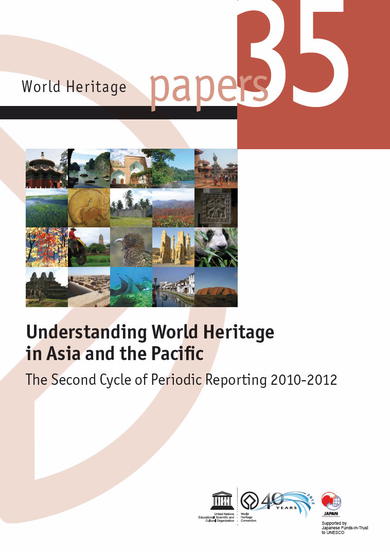The World Heritage Convention aims to protect the most outstanding cultural and natural heritage places on Earth. Countries (States Parties) that have adhered to the World Heritage Convention accept an obligation to manage World Heritage properties on their territory to the highest standards of protection, and periodically report on what action they have taken to fulfil this task.
Officially, Periodic Reporting is the procedure by which the States Parties submit, in accordance with Article 29 of the World Heritage Convention, to the UNESCO General Conference through the World Heritage Committee, reports on the status of implementation of the Convention. This follows the decisions of the 11th General Assembly of the States Parties to the World Heritage Convention and the 29th General Conference of UNESCO to invite the States Parties to submit reports "on the legislative and administrative provisions they have adopted and other actions which they have taken for the application of the Convention, including information on the state of conservation of the World Heritage properties located on their territories".1
In order to implement Periodic Reporting, the World Heritage Committee has adopted a reporting procedure and format. This requires that States Parties should submit periodic reports every six years, and these reports should be examined by region (Arab States; Africa; Asia and the Pacific; Latin America and the Caribbean; Europe and North America). The result of the first cycle of Periodic Reporting in Asia and the Pacific was reported to the Committee in 2003, and the second cycle was launched by the World Heritage Committee at its 34th session in 2010. The results of the second cycle were reported to the Committee at its 36th session in 2012.
The second cycle of Periodic Reporting covered two major issues – implementation of the World Heritage Convention at national level for the States Parties that had ratified the Convention until 2010; and the state of conservation of each World Heritage property inscribed from 1978 to 2010. All 41 States Parties to the Convention in Asia and the Pacific region participated in the process,2 which covered the 198 World Heritage properties in those countries. Information was collected through an online questionnaire and the exercise achieved a remarkable 100% reporting rate.
This publication has been prepared based on the outcome of the second cycle of Periodic Reporting in Asia and the Pacific. Its main purpose is to present the current situation relating to the implementation of the World Heritage Convention as well as the state of conservation of the World Heritage properties in the region. It has been prepared particularly with policy-makers and site managers in mind, who are responsible for day-to-day management of World Heritage properties, in the hope of providing some insights into their daily management roles.
1 Implementation of the 1972 Convention for the Protection of theWorld Cultural and Natural Heritage, Resolution of the 29th session
of the UNESCO General Conference.
2 Brunei Darussalam ratified the World Heritage Convention on 12 August 2011 and Singapore on 19 June 2012, which entered into force on 12 November 2011 and 19 September 2012 respectively. Therefore they did not participate in the second cycle of Periodic Reporting.











